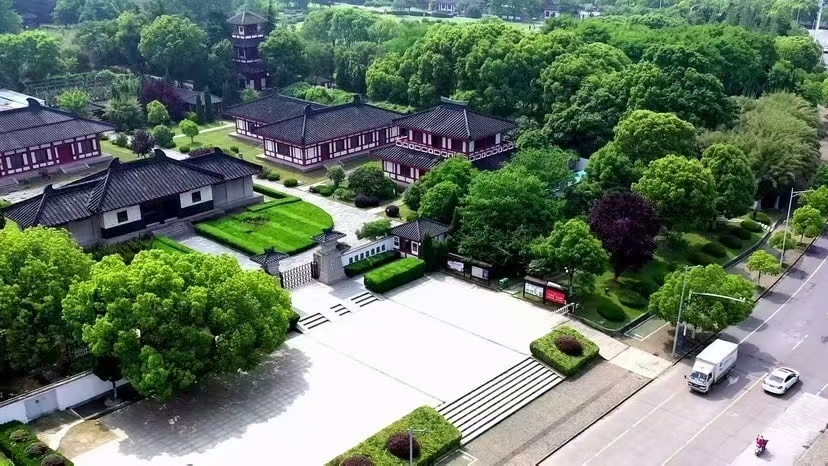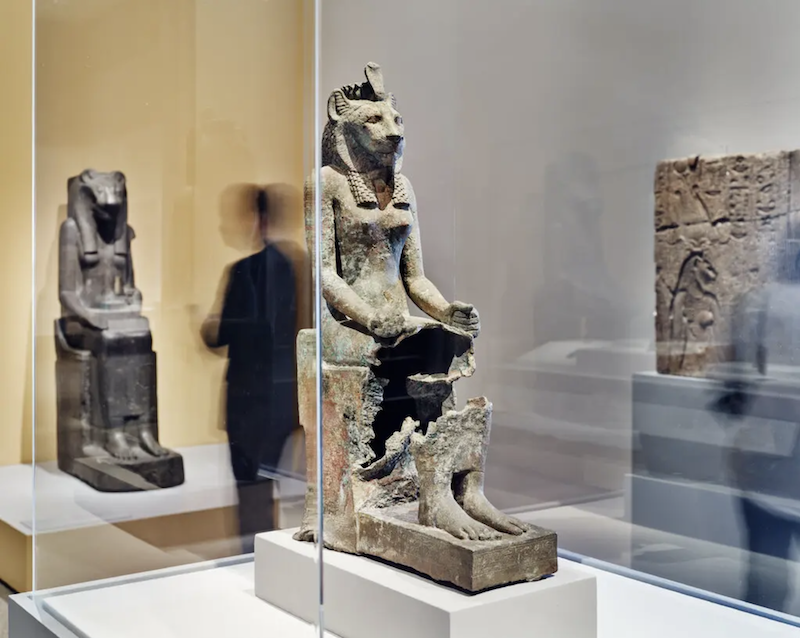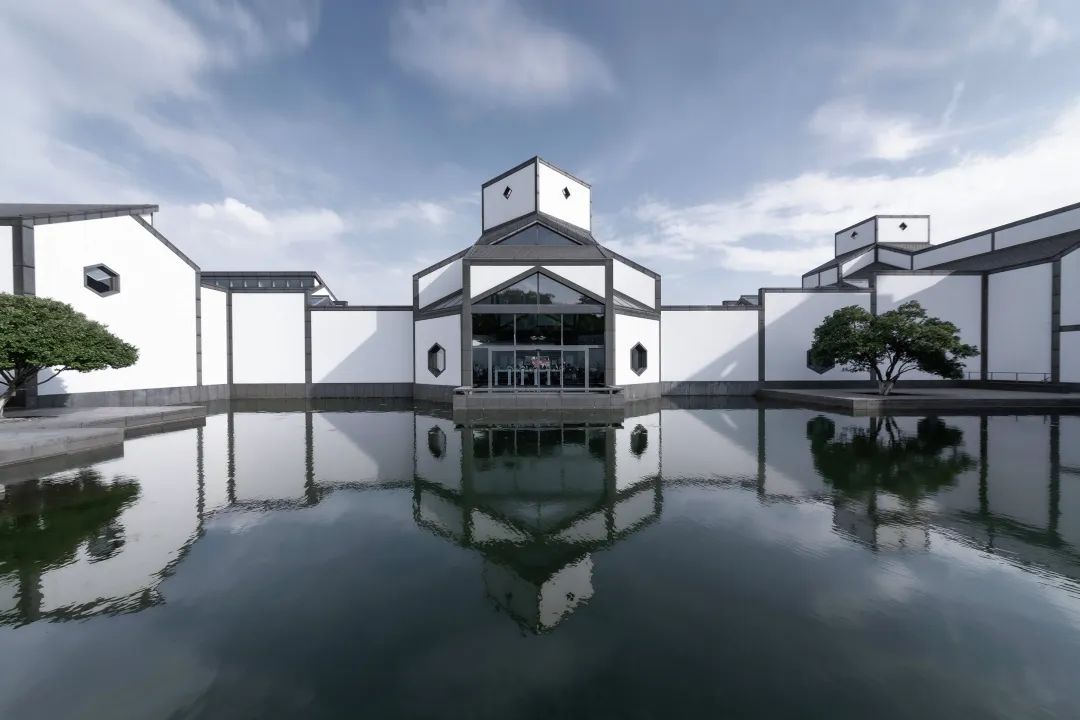
The selection criteria for "Cultural Relics Prohibited from Exhibition Abroad" were extremely stringent. Of the more than 100 million movable cultural relics in China, only 195 were selected. Five cultural relics from Anhui Province were selected, four of which were unearthed from a humble tomb in Ma'anshan—the tomb of Zhu Ran, a renowned general of the Eastern Wu during the Three Kingdoms period.
Most Chinese city names are based near mountains or rivers, or are inspired by auspicious symbols. However, the three characters "Ma'anshan" carry the tragic grandeur of war and battle. King Xiang Yu of Chu committed suicide here, his saddle falling to the ground and forming a mountain. A thousand years later, Li Bai died here, his poetic spirit forever etched in Caishiji.
However, Ma'anshan's history is far more than just legends and poetry. Separated by a river from Jinling, they shared the mists and waters of the Six Dynasties, echoing each other throughout history, forming a unique dialogue between civilizations.
To grasp the weight of this conversation, we must mention the "prohibition of exhibition abroad" list. This list sounds academic, but it carries immense weight. The selection criteria are extremely stringent. According to the "Regulations for the Implementation of the Cultural Relics Protection Law of the People's Republic of China," only "first-class cultural relics that are unique and fragile" are eligible for inclusion. In other words, these are national treasures among national treasures, unique artifacts of civilization that, once lost, can never be replaced. From 2002 to 2013, the State Administration of Cultural Heritage selected them in three batches, resulting in a total of only 195 items (sets). Of the over 100 million movable cultural relics nationwide, only 195 were selected. Five artifacts were selected from Anhui Province. Four of them were unearthed from an unremarkable tomb in Ma'anshan—the tomb of Zhu Ran, a renowned general of the Eastern Wu during the Three Kingdoms period. The other is the renowned Warring States-era Zhuke Cauldron (Chu Da Ding), the treasure of the Anhui Museum.
This "four-fifths" weight led me into the Zhu Ran family cemetery.

Aerial view of the cemetery. Photo provided by the author.
The cemetery lies quietly within a public park, shaded by pines and cypresses, paved with bluestone. It resembles an ordinary urban green space where citizens often wander. The afternoon sun filters through the branches and leaves, casting tiny specks of light like fragments of time. Who would have imagined that beneath this tranquility lay one of China's ten great archaeological discoveries of the 1980s?

The tomb chamber has been protected, and through the fence, you can see layers of steps extending downwards.
The tomb chamber has been protected, and visitors can only admire it from outside the fence. Through the fence, you can see steps leading down into the darkness. This short 8.7-meter tomb passage feels like a time tunnel, leading to an era we have long misunderstood.
The tour guide, a cheerful young woman, said, "Zhu Ran, and his tomb, were both very low-key. Look, those four national treasures are placed in a large cabinet with other unearthed lacquerware, not on display separately."
Sure enough, in that slightly crowded display case, those treasures that were “not allowed to leave the country” stood there in plain sight. If you weren’t looking for them deliberately, you would hardly recognize them from the dozens of lacquerware pieces at a glance.
This low-keyness, on the contrary, seems particularly solemn.

Wu leather rhinoceros leather lacquer gilt bronze buckle ear cups (2 pieces) Ma'anshan Three Kingdoms Zhu Ran Family Cemetery Museum Collection Three Kingdoms Wu
Take a closer look at the pair of rhinoceros-skin lacquer cups with gilded copper buckles. They stand quietly in a corner of the display case, their black, red, and yellow colors flowing like clouds. These seemingly ordinary wine glasses unexpectedly predate the physical evidence of Chinese rhinoceros-skin lacquer craft by over 600 years. Even more thought-provoking is that this technique only appears in literature in the Tang and Song dynasties, and only reached maturity in the Ming and Qing dynasties. So, how did this technique quietly survive through the cracks of history, from the Three Kingdoms period to the Tang Dynasty? Where did the spark of this art linger? History always leaves large gaps, leaving us to piece together the truth from fragments and questions.

A lacquer plate depicting the life of aristocrats unearthed from Zhu Ran's tomb, collected by the Zhu Ran Family Cemetery Museum of the Three Kingdoms Period in Ma'anshan City

Lacquer tray depicting aristocratic life in the exhibition hall (replica)
The lacquer plate depicting aristocratic life (a replica is on display) held my attention for a long time. Painted in red and black, the plate depicts, within a limited space, a long scroll of twelve figures, depicting scenes of banquets, chess games, falconry training, and outings. The concise brushwork and vivid artistic expression create a miniature version of "Along the River During the Qingming Festival," vividly capturing the daily life and aesthetic tastes of the Eastern Wu aristocracy for posterity.

Painted lacquer plate with Ji Zha hanging his sword, Three Kingdoms period, Wu, Anhui Provincial Institute of Cultural Relics and Archaeology
The guide gently reminded us that the most significant historical piece is the painted lacquer plate depicting Ji Zha hanging his sword. Hailed as "the only surviving historical material on Three Kingdoms painting with reliable dating," it fills a gap in the available evidence of paintings from the period. Sitting quietly in the center of the display case, it could easily be mistaken for an ordinary plate if not pointed out. Its value lies not only in the artistry but also in its independent narrative—it's a complete painting, contained solely on a lacquer plate.
The bottoms of many lacquerware bear the inscription "Shujun Zaozulao." This simple inscription reveals a different Three Kingdoms era, one marked not only by battlefields but also by trade, the spread of craftsmanship, and the fusion of cultures. Imagine, amidst the clashing swords and the relentless battles of Zhuge Liang's six expeditions to Qishan and Lu Xun's burning of successive camps, how could Shu lacquerware safely reach Jiangdong and become a burial object for a Wu general? What kind of unimpeded trade routes did this require? What kind of civilizational resilience did this require?

Lacquer clogs unearthed from Zhu Ran's tomb Ma'anshan Museum Three Kingdoms

Geta (replica)
The guide explained that the pair of lacquered clogs, one of the four major cultural relics, was stored in a warehouse, and a replica is currently on display. The value of clogs lies not in their artistic value but in their empirical evidence. The discovery of these clogs has rebutted the old theory that clogs originated in the Tang Dynasty. Even more significant is that the same design later spread eastward to Japan, becoming a testament to cultural exchange. A pair of clogs connects not only the past and the present, but also the closely connected Chinese and Japanese civilizations.
These artifacts not only serve to confirm historical records, but also to fill in details that have been forgotten. Official history records the lives of emperors and generals, but these everyday objects tell the true story of life and emotions of that era.
The value of Zhu Ran's tomb goes far beyond these few top-tier artifacts. Its burial chamber features a "four-corner vaulted" ceiling. This vaulted ceiling, constructed from bricks and stones, rises from the four corners and tapers inward, ultimately converging at the top. This structure is not only stable and durable, but also embodies the cosmic concept of a "round heaven and square earth." Among the artifacts, the most evocative of these artifacts is a seven-piece cup and plate known as a "lacquer lattice." Its clearly defined functional areas, reminiscent of today's dinner plates, make it a veritable "fast food tray" of the Three Kingdoms period. This ingenious design instantly brings us closer to that era, allowing us to marvel at the practical wisdom of the Eastern Wu craftsmen. It has also awakened the tomb from a millennium of slumber, becoming a unique testament that connects the past and the present, inspiring endless reflections today.

Rhinoceros Leather Yellow-Buttoned Cup, Three Kingdoms Period, Wu


